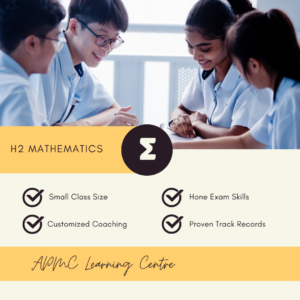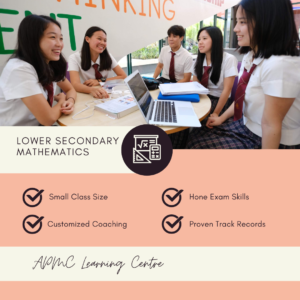Lower Secondary Math Tuition
Lower Secondary Math Tuition at APM Tuition is unique and powerful with curriculums specially designed to improve students’ academic performance in Math based on examination trends. The programs focus on developing a strong understanding of crucial mathematical concepts through deep learning and problem-solving techniques. On top of that, students are exposed to real-world problems that allow them to connect Math with real-world applications.
With a small class size of 6 (max 8), we ensure that every student receives our dedicated attention during the Math lesson. We champion consistency and active learning in students, equipping them with the skills and wits to carve out their edge in Math and eventually Ace the examination.
Our lessons are customized to cater to different students’ needs. Students will receive tutorials aligned with their school syllabus to ensure a complete reinforcement of concepts and ample practice. Our notes, tutorials, and practice papers are constantly updated with current questions to ensure students are equipped with the necessary skills and knowledge. Each set of notes and tutorials helps students develop fundamental techniques to solve routine questions, apply complex concepts and hone critical reasoning skills for tackling nonroutine problems that include real-world contexts.
Practice tests and mock practice papers that mirror actual examination conditions help give students the practice and confidence needed to ace their examinations. Revision packages are provided to help students consolidate their knowledge, review the typical questions for each topic and gain awareness to avoid and correct common mistakes through error analysis practices.
Secondary 1 Math
In Secondary 1, students will learn new topics such as Primes, Highest Common Factor and Lowest Common Multiple, Approximation and Estimation, Basic Algebra and Algebraic Manipulation, Linear Equations and Simple Inequalities, Functions and Linear Graphs, and Polygons. The topics taught in primary school will be covered in greater depth while students master new and more complex concepts.
Secondary 2 Math
In Secondary 2, students will learn new topics such as Expansion and Factorization of Quadratic Expressions, Quadratic Equations and Graphs, Algebraic Fractions, Linear Simultaneous Equations, Direct and Inverse Proportions, Maps and Scales, Congruency and Similarity, Probability and Trigonometric Ratios. Additionally, the topics taught previously in Secondary 1 will be expanded on. For example, the topic on Volume and Surface Area will include new content such as cones, pyramids, and spheres.
Lower Secondary Math Tuition Curriculum
Numbers
- Real numbers
- Integers
- Rational & irrational numbers
- Number lines
- Factors & multiples
- Number sequences
- Approximation & estimation
- Rate, ratio & speed
- Percentages
- Direct & inverse proportions
- Maps & scales
- Indices*
Algebra
- Algebraic expansion, factorization & manipulation
- Linear equations
- Linear inequalities
- Functions & graphs
- Algebraic expansion, factorization & manipulation
- Subject of formulae
- Algebraic fractions
- Quadratic factorization
- Quadratic equations
- Quadratic graphs & its applications
- Linear simultaneous equations
Statistics
- Statistical diagrams
- Measures of central tendency
- Mean, mode & median
- Data analysis
Geometry & Trigonometry
- Basic geometrical concepts & properties
- Angle properties of polygons
- Geometrical constructions
- Pythagoras’ Theorem*
- Mensuration
- Pythagoras’ Theorem
- Congruence & Similarity
- Proof of Congruency & Similarity
- Area & volume of similar figures & solids*
- Trigonometric ratios
- Further Trigonometry*
- Sine Rule
- Cosine Rule
Note: *denotes IP components covered in the Integrated Mathematics programme
Lower Secondary Math Tuition Highlights
Content Mastery
- Learn about the classification of numbers based on number properties, and find the highest common factor and lowest common multiple of numbers using prime factorisation
- Explore the concept of variables and learn how the relationship between two variables can be represented in algebraic, tabular and graphical forms
- Use real-life contexts, including travel plans, transport schedules, recipes and see how they apply to the syllabus
- Learn terminologies related to personal and household finance, such as interests, instalments, utilities bills, and exchange rates
- Learn more complex algebraic concepts such as cross factorisation
- Learn about the properties of similar and congruent figures and how congruency and similarity can be applied in real-world contexts
- Discover how the sides of a right-angled triangle are connected by the trigonometric ratios.
- Be able to incorporate algebra in trigonometry to find unknown sides and angles of a right-angled triangle
- Gain familiarity with the formulae for the volume and surface area of a sphere, a cone, and a pyramid
- Use experiential activities to remember the formulae and full derivations of the formulae
- Discover statistical diagrams, such as dot diagrams, stem-and-leaf diagrams, and cumulative frequency curves
- Investigate and discover how the concept of probability can be used in everyday events, including weather forecast and the performance of stocks in the stock market
Skills and Techniques
- Learn to use algebra and other symbols to represent and convey mathematical ideas
- Master the application of algebraic equations to a variety of problems, and solve problems using a systematic and logical approach
- Acquire basic manipulative skills, such as Rounding Off, Arithmetic and Algebraic Manipulation and Data Handling
- Learn to plot, draw and interpret line graphs and parabolic graphs
- Analyse and interpret the different forms of statistical diagrams using mean, mode, and median
- Master analysing problems and explore alternative ways of solving them, developing metacognitive skills
Revision and Reinforcement
- Focus on revising concepts and clarifying any existing misconceptions
- Learn to identify and avoid common pitfalls to prevent loss of marks in the exams
- Hone time management skills with multiple mock examination papers under exam conditions
- Get a systemic, topical-based revision of all topics, including common and challenging questions
Key Features of Our Math Tuition Classes
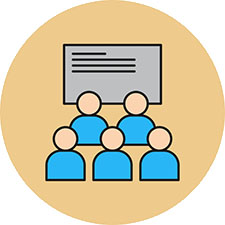
Small Class Size
2 to 8 students
Conducive Learning Environment

Customized Coaching
Reinforcing current school topics
1 to 1 Coaching
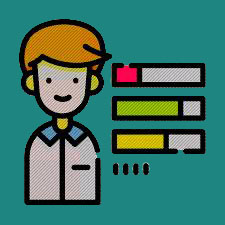
Hones Exam Skills
Time Management Skills
Exam Questions Training

Proven Track Records
> 86% Scoring A
> 93% improvement
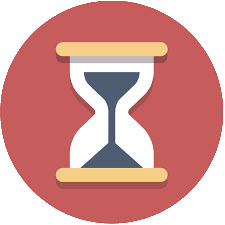
Lesson Duration
2 Hrs Weekly (Sec & JC)
1.5 Hrs Weekly (Pri)
Hi Tr Lewis, Isaac result.
Math – A1 (92% +/-)
I yet to see the paper
Secondary 2 Math, Bukit Panjang Gov High
Explore Other Subjects

Primary School
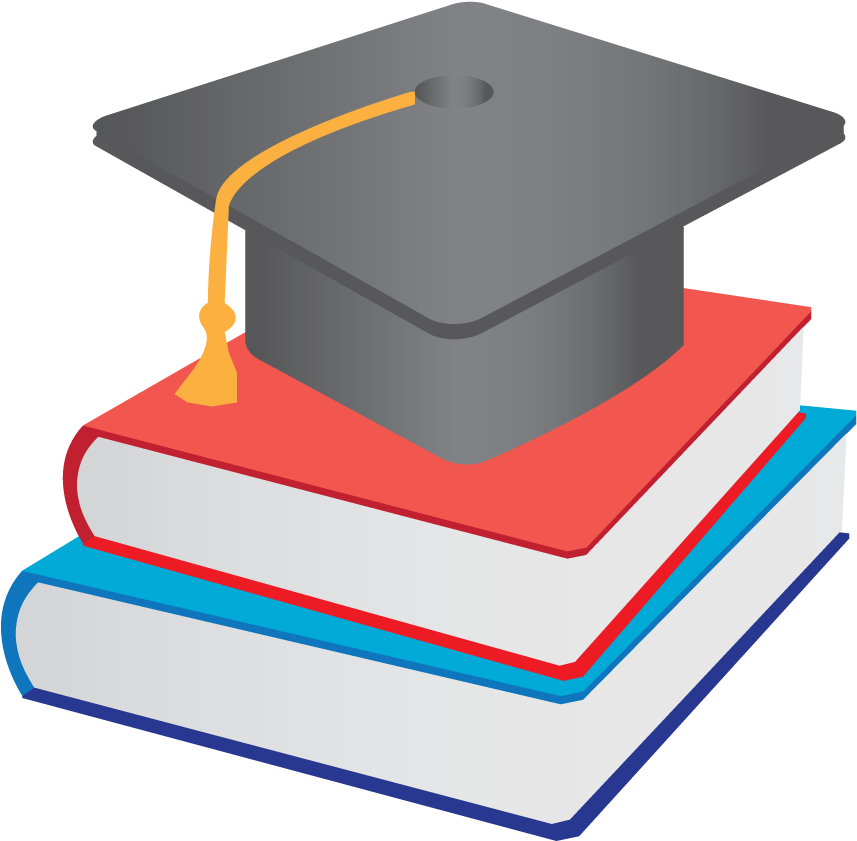
Secondary School


